The Québec maritime Blog
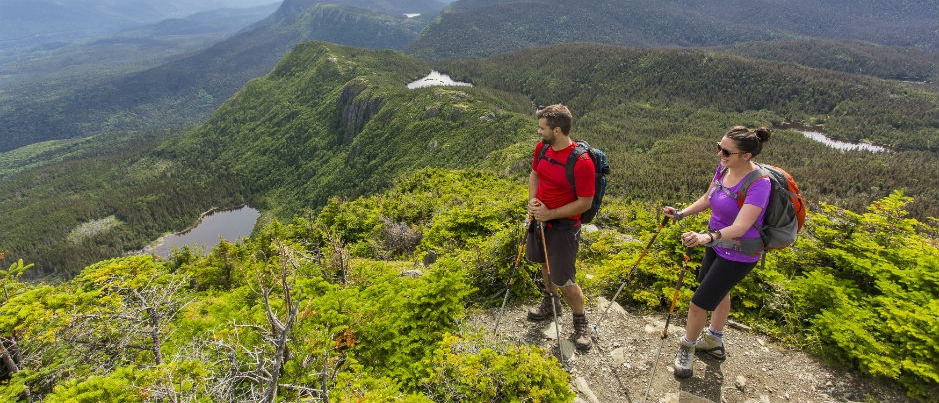
-
Parc national de la Gaspésie
Mathieu Dupuis/Le Québec maritime
Sustainable Tourism: What’s Happening in Our Regions
In a territory as rich in natural beauty as Eastern Québec, it’s not surprising that many attractions and lodging establishments have implemented sustainable tourism practices. Here are some of the initiatives that stand out in the maritime regions of Québec.
Activities and attractions for outdoor lovers
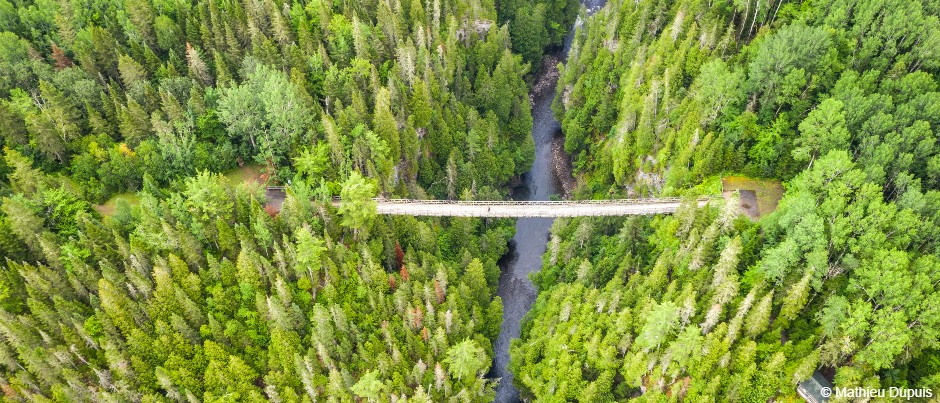
Our regions offer a variety of activities and attractions in harmony with nature. Here are a few examples:
- Terfa: In addition to offering cottages and campsites, this attraction located inland in Bas-Saint-Laurent gives you the opportunity to enjoy various activities, including hiking (which will take you across the highest suspension footbridge in Québec and give you access to a maze). The company’s mission includes habitat conservation, protection and restoration as well as sustainable development.
- Reford Gardens: Various eco-friendly measures have been implemented on this site, including healthy growing practices (chemical-free gardening, non-potable water irrigation, etc.), use of sheep (“lambmowers”) to maintain the heritage property, and the ERE 132 Eco Home, an interpretation centre for excellence in green building built according to an eco-friendly housing model that’s both affordable and adapted to our northern climate. In addition, the Estevan Lodge restaurant offers innovative cuisine inspired by the gardens’ harvests.
- Cime Aventure: The owners of this riverside company are committed to becoming an exemplary leader in sustainable development in Québec. Discover the Bonaventure River by canoe, kayak or inflatable raft and observe Atlantic salmon without disturbing the fish. You can also stay in one of their cabins built on stilts.
- Cap Aventure: Accompanied by experienced interpreter guides, take part in a sea kayaking trip and discover the world of grey and harbour seals. This is an extraordinary experience that respects the ecological integrity of our natural heritage. You can also spend the night in alternative accommodations such as a glamping pod or teepee.
- Griffon Aventure: Ecosystem preservation and the energy transition are key elements of this outdoor company’s approach. In addition to sea and river activities (canyoning), the company offers several accommodation options, including rustic cabins made of recycled materials.
- Parc Nature de Pointe-aux-Outardes: This nature park protects nine ecosystems that you can discover through guided tours and interpretive panels. You can also spend the night in a giant birdhouse! The interiors of these glamping units are inspired by materials used by local birds to build their nests.
- Attitude Nordique: This dynamic team is particularly concerned with nature conservation and community building. Their outdoor packages give you the opportunity to sample local products thanks to partnerships with other local companies. Activities include sea kayaking, stand-up paddle boarding and via ferrata excursions. In additional, the company offers various rustic accommodations.
- Croisières AML: This company offering whale-watching cruises has been working towards reducing their ecological footprint through a variety of actions, including cofounding the Eco-Whale Alliance, reducing water consumption by improving wastewater management and reducing gas consumption by upgrading the engines in their boats and using electronic engine control technology.
- Atelier Côtier: Sustainable development is key to this workshop and boutique! Any time a decision is made, the most eco-responsible solution is prioritized. The company focuses on using recycled materials, optimizing processes to minimize waste and careful waste management. Visit them to discover original and sustainable creations made on the Islands.
Eco-friendly accommodations
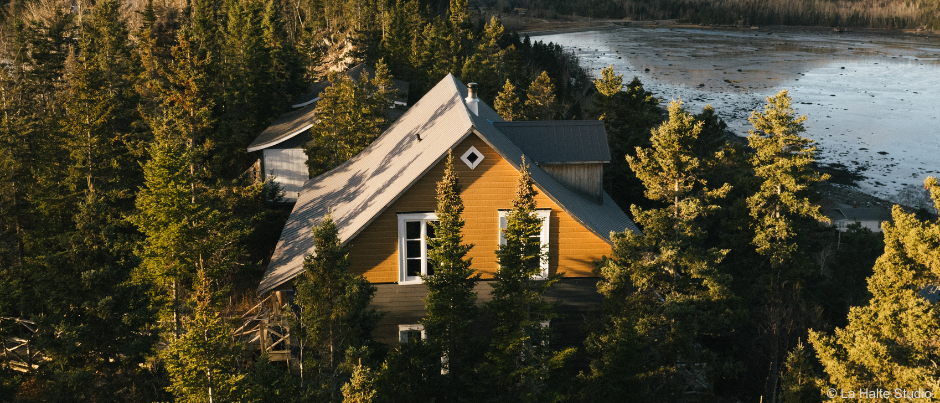
For outdoor lovers, there’s nothing better than eco-friendly accommodations. Here are some of the options available in our regions:
- Domaine Floravie: This site offers wooden “tiny house”-style eco-friendly mobile cottages. In the summer, these units are located along the St. Lawrence, while in the fall, they’re moved inland to protect them from the tides. The cottages are also built according to ecological principles: they’re equipped with solar panels, composting toilets and showers, etc.
- Vieux Loup de Mer: In addition to 15 wooden cottages that reflect the unique character of authentic Québec dwellings, this site has a vegetable garden, a chicken coop and a gourmet corner that offers specialty products made by local restaurants and food artisans.
- Le Nordet: This hotel has implemented a number of eco-friendly measures. During a recent renovation, care was taken to use materials with minimal environmental impact. In addition, high-efficiency water-saving aerators were installed in showers and faucets throughout the hotel.
Protected natural sites
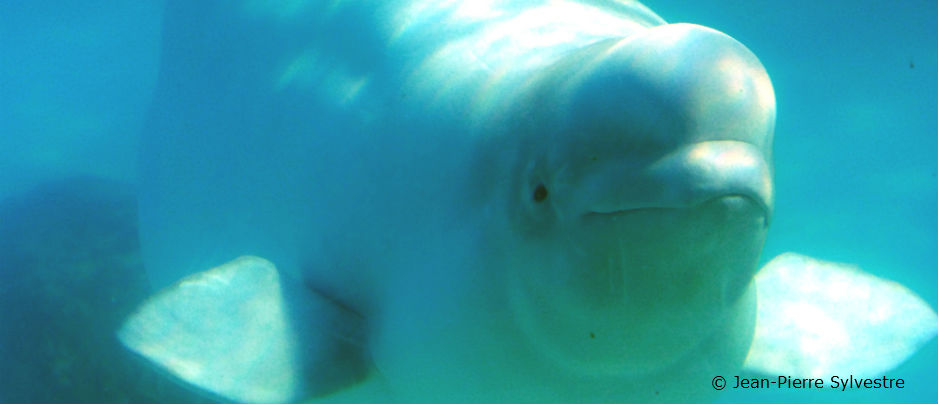
The maritime regions of Québec are home to 10 national parks that protect and promote local flora and fauna while encouragine eco-friendly discovery of the natural world. All these parks have implemented various sustainable development measures to preserve local natural heritage, maintain ecological integrity and take into account environmental, social and economic concerns when developing programs for visitors.
For example, as a member of the Eco-Whale Alliance, the Saguenay–St. Lawrence Marine Park offers eco-friendly whale-watching activities. The Alliance brings together the Group for Research and Education on Marine Mammals (GREMM), whale-watching tour companies as well as Sépaq and Parks Canada. Other examples of sustainable tourism iniatives in our parks include:
- Eco-friendly seal-watching activities in Parc national du Bic
- Tundra conservation efforts in Parc national de la Gaspésie (to protect the natural habitat of woodland caribou, an endangered species)
- Beluga protection measures in the Saguenay–St. Lawrence Marine Park and in Parc national du Fjord-du-Saguenay
- Fossil preservation in Parc national de Miguasha, a UNESCO World Heritage Site
Part of the region of Côte-Nord has also been designated a World Biosphere Reserve by UNESCO. Thus, the Manicouagan-Uapishka World Biosphere Reserve educates visitors about environmental, social and economic issues in this area. The Uapishka Station also encourages the discovery and protection of this territory through ecotourism activities, encounters with the local Innu community and scientific research. Further east in Côte-Nord, the Sept Îles Archipelago is home to the largest seabird sanctuary in Eastern Canada, on Corossol Island. The boats that will take you to this archipelago must maintain a distance of at least 500 metres (1600 feet) from the sanctuary.
In the Îles de la Madeleine, birds can find refuge in the Pointe de l’Est National Wildlife Area. This territory, which is protected by the Canadian Wildlife Service, shelters ducks and shorebirds. Piping plovers and horned grebes, two endangered species, nest here during breeding season.
The islands protected by Société Duvetnor, off Rivière-du-Loup in Bas-Saint-Laurent, are preserved environments in the middle of the St. Lawrence. In addition to offering the option of hiking and observing wildlife, Île du Pot à l’Eau-de-Vie and Île aux Lièvres provide various lodging options: an inn, cottages, campsites and a lighthouse. Several ecotourism measures have been implemented on these islands to protect wildlife (including several species of birds) as well as treat rainwater, etc.
In Gaspésie, the International Appalachian Trail (IAT-QC) is also committed to sustainable development. The Québec segment of the trail is the first long-distance hiking route to receive the Grande Randonnée designation in North America (GR®A1). The purpose of this certification is to ensure the quality and sustainability of the trails to which it is granted, in accordance with specific criteria. The IAT-QC also complies with the seven principles of Leave No Trace Canada, including using existing trails to avoid damage to surface vegetation and disposing of waste properly. The trail crosses through Forillon National Park, Parc national de la Gaspésie and the Réserve faunique de Matane. An eco-friendly mountain lodge, Auberge de montagne des Chic-Chocs, is located in the wildlife reserve. Perched 615 metres (2000 feet) above sea level, the building is designed to integrate into the natural environment. It’s also off the grid since it’s powered by generators and solar panels.
At the eastern tip of the Gaspé Peninsula, the Percé UNESCO Global Geopark offers a multitude of indoor and outdoor activities that showcase the rich geological heritage of Mt. Sainte-Anne and Mt. Blanc while disturbing the existing environment as little as possible. The geopark also offers 10 glamping units that allow you to spend the night in harmony with this exceptional site.
Food
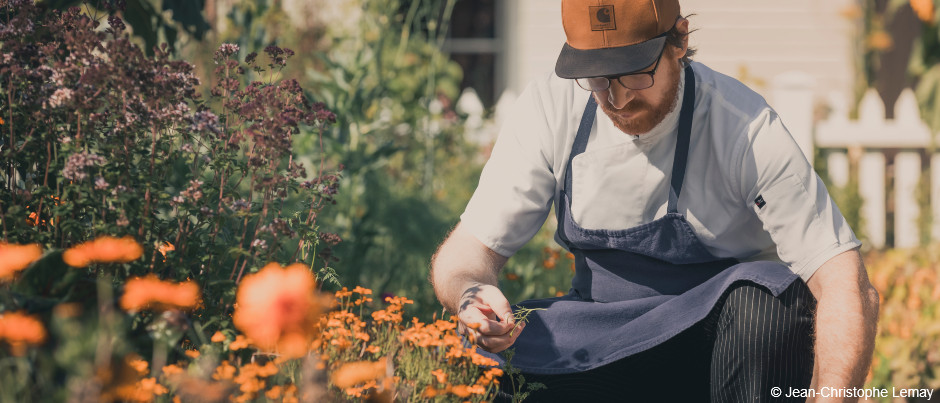
Are you interested in discovering new regional flavours? If so, keep an eye out for the Smarter Seafood logo, which designates restaurants and fish markets that support the sustainable development of the St. Lawrence through encouraging the consumption of relatively unknown marine species that are sustainably harvested.
Fishing, the main economic activity in the Îles de la Madeleine, is subject to many rules and regulations. For example, visitors are strictly forbidden from fishing for lobster at all times. (This industry is highly regulated to ensure sustainability.) You can, however, harvest clams (quahogs) along the shores of lagoons, provided you comply with certain restrictions.
In Bas-Saint-Laurent, Côté Est offers a seasonal cuisine that showcases local ingredients. (Be sure to check out their gourmet market!) This café-bistro and caterer is also involved in educating the public about the forest while helping to make this environment accessible to all, primarily through the forest mushroom festival held in Kamouraska every year.
Other sustainable tourism measures
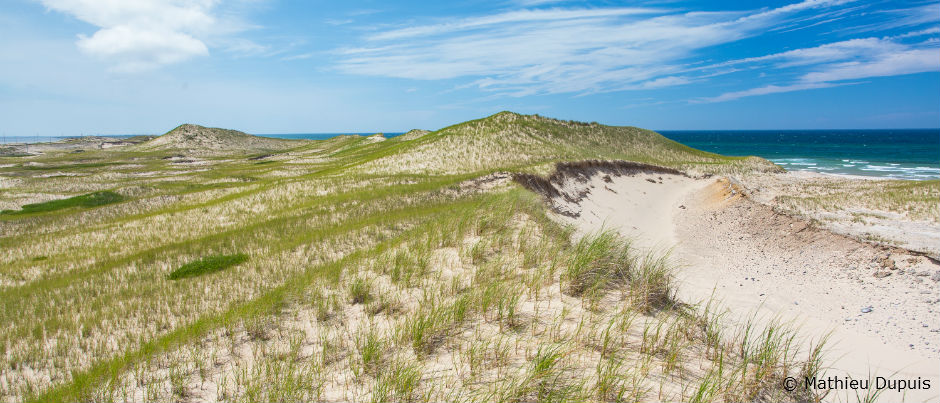
So many sustainable tourism measures have been implemented in the maritime regions of Québec that it’s impossible to name them all. Here are a few other interesting ones:
- The dunes, which are an integral part of the beauty of the Îles de la Madeleine, are a fragile environment that’s essential to the ecological balance of the archipelago. For one thing, they prevent salt from the sea from seeping into the Islands’ groundwater supplies. Vehicles are forbidden on beaches and dunes; walking on the dunes is also discouraged. Please use marked paths instead.
- Tourisme Îles de la Madeleine has launched a promotional campaign to raise public awareness of the fragility of the archipelago and encourage visitors to help preserve local ecosystems. Find out more about the “I Care for Les Îles de la Madeleine” campaign.
- Several events in Gaspésie focus on sustainability while showcasing local culture. These include the Petite-Vallée Song Festival, Festival Musique du Bout du Monde in Gaspé, Festival La Virée Trad in Carleton-sur-Mer and the Winter TDLG.
- Charging stations for electric vehicles can be found throughout the four maritime regions of Québec.
- In Tadoussac, visitors can rent electric bikes to explore the village from another angle.
These are only a few examples of sustainable tourism initiatives in our regions. Have you encountered any others while visiting us? Tell us about them in the comment section below!
(0) comment